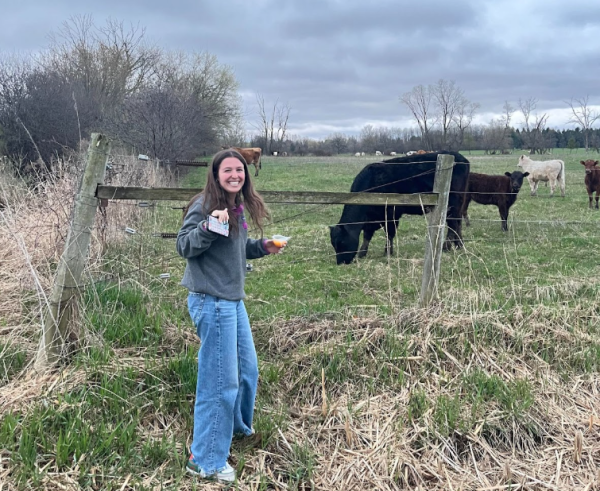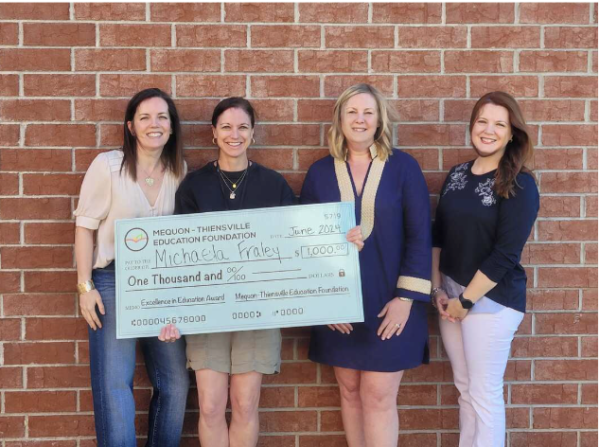Scholarships: The guide to unlocking the application process

A proud senior opens the envelope containing the end to months of hard work – a college acceptance letter. To commemorate the occasion, he writes a celebratory tweet, hugs his parents, and calls relatives. But now, another question arises: how is the student going to pay for another few years of schooling? Taking advantage of the incredible scholarship opportunities that Homestead offers is smart, but the process can be time-consuming and tricky.
As a whole, the scholarship process proves overwhelming. There are so many different options to help pay for college: institutionally-based scholarships that colleges give directly (only applicable to that specific school) either through the initial application or a specific scholarship application, local scholarships from the Homestead and Mequon-Thiensville community that have a smaller pool of applicants, and scholarships offered through websites like Cappex.com or Scholarships.com that have an unspecified college destination and are more nation-wide. Most of these scholarships are merit-based, but universities also offer need-based financial aid.
Seniors should start looking at scholarship and financial aid opportunities during and sometimes before the initial application process, even though most scholarship applications (non-institutional) are due in the spring.
Mrs. Lauren Schaefer, school counselor, stated, “The scholarship application process does not have a definite start or end to it, it can kind of just go on and on throughout senior year and into college even,” She continues, “The scholarships that are available for seniors, their deadlines come and go, throughout senior year…but the vast majority of scholarships that seniors end up searching for and applying for become available the second half of senior year.”
To keep track of deadlines, students can listen to announcements, go on Family Connections, or stop by the Counseling Office periodically to learn of new opportunities. “The process is really owned by the student. If a student wants to apply for one or one hundred scholarships, they can do as much as they really have time to do,” Mrs. Schaefer explained.
It’s very possible to run out of time to apply. Michael Nelson, senior, stated that he “started one [application], but it was too much work in too little amount of time,” so he could not finish and possibly reap the benefits.
Many high schools across America offer high school-specific scholarships, and Homestead is no exception. Homestead has “two scholarships in particular that [staff members] help organize the application process for. One is the Frank Family Memorial scholarship that is completely Homestead-specific and is a very prestigious award. We also have a local scholarship application: one application that seniors fill out to be considered for a group of different scholarships that are offered by local families, other nonprofit organizations or businesses,” Mrs. Schaefer clarified.
The application time input and monetary export really differs from student to student. For some, the ease of the local application allows it to take a relatively short amount of time. “I found out about [the Anne Stover Memorial Scholarship ,] about a day or two before it was due, so I did the entire application in one go — and it probably took me about an hour or two.” Katie Bandurski, Class of ’14 and freshman at Drake University, said.
Different national scholarships can be more time-consuming. “The process was pretty extensive for the National Merit Finalist scholarship. It involved taking multiple tests and writing essays.” Max Woody, Class of ’14 and freshman at Tulane University, said.
Also, the number of different scholarships applied to can dramatically increase the time commitment. “I applied to a lot of scholarships so probably about a month of work overall.” Lauren Steinert, Class of ’14 and freshman at UW-Madison, said.
All recipients of scholarships need to show that they are something other than a simple transcript or ACT score, no matter how much work has gone into those grades. It’s important to “really key in on extracurriculars, outside involvements, and leadership positions,” Bandurski said.
Besides personal activities and achievements, other things can be helpful in getting those precious dollars from organizations or universities. “I also found it to be beneficial to form close relationships with my teachers. Not only will it help you achieve better grades, but a lot of times teachers are on the committees that end up deciding who receives a scholarship,” Bandurski continued.
At the end of the day, all the applications and hard work mean next to nothing if you are not granted the money. To stand out, students need to assert their best selves, even if they think it might seem self-centered.
According to Austin Cao, Class of ’14 and freshman at Rice University, “If you want to stand out in the scholarship application process, you need to understand why people are even willing to throw money at you. They want to invest in the next generation, and they see your education as the best way to do that. Show them that you value your education just as much as them, and that you’re passionate and motivated enough to make use of it.”

Lauren Bartlett can usually be found eating or watching chick flicks/Disney movies - often simultaneously and with the classy girls of the varsity swim...




